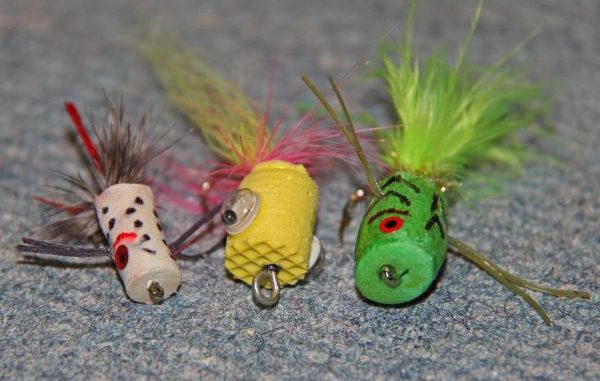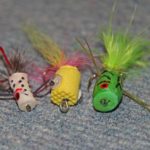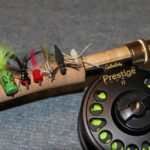
My colleague and accomplished fly tier, Reb Stewart recently gave me a box of foam-bodied poppers and various insect patterns. The colors looked good, the legs and antennae, etc. all set just right.
That he tied these flies himself was not such a surprise, but his creative process is definitely something any do-it-yourselfer will appreciate.
Essentially, Reb fashions a makeshift coring device by affixing the empty shell casing to a drill bit and punching out little tubes of sturdy foam from a pair of cheap flip flops.
Others may opt for a block of industrial foam and an office hole punch, but the concept is the same — harvest a small nugget of this buoyant material and add whatever legs, wings and accents you think a bluegill might appreciate.
Directions for tying this type of fly can be found on the Louisiana Fly Fishers’ web site at http://www.laflyfish.com/flies/foam-poppers.php.
For a foam spider, double over a piece of foam and punch out your section right at the fold line (similar in concept to making paper dolls). Unfold the foam and you have two conjoined hemispheres that form the spider’s head and carapace. Superglue this foam body to the hook before tying on the legs to avoid slippage.
The Louisiana Fly Fishers site also offers tying instructions for some of the popular bluegill flies:
Jitterbee: http://www.laflyfish.com/flies/jitterbee.php
Cap Spider: http://www.laflyfish.com/flies/cap-spider.php
Kathy’s Golden Spider: http://www.laflyfish.com/flies/kathys-golden-spider.php
Panfish Polecat: http://www.laflyfish.com/flies/panfish-polecat.php




